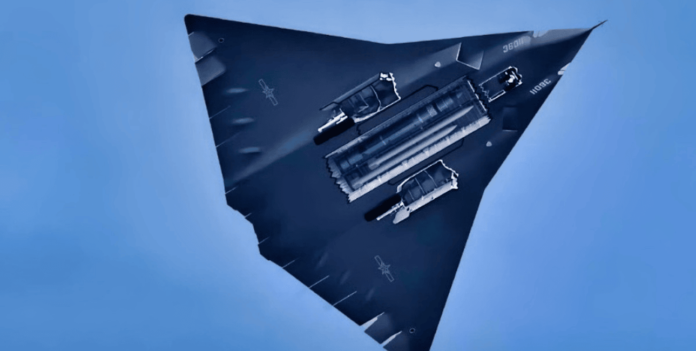Chinese Scientists Claim Breakthrough in Anti-Stealth Detection
Chinese researchers say they have developed a space-based radar system capable of detecting and tracking US stealth aircraft such as the F-22 Raptor and the B-21 Raider in all weather conditions and at any time of day.
The breakthrough, announced in a recent Journal of Radars publication, could challenge decades of US dominance built on stealth technology, which relies on evading radar detection through shape and materials.
The study details China’s new Ludi Tance No. 1 (LT-1) dual-satellite radar system, which scientists claim can overcome background clutter that traditionally conceals stealth aircraft from space-based sensors. The development marks a major step in Beijing’s ongoing push to erode Washington’s technological edge in air warfare.
Dual-Satellite System Promises 24/7 Stealth Tracking

Led by Chen Junli, chief designer at the Shanghai Academy of Spaceflight Technology, the research team simulated the detection of a stealth target with a radar cross-section of 10 square meters—a figure considered realistic for stealth aircraft when viewed from above.
The LT-1 uses a bistatic radar configuration, meaning one satellite transmits radar pulses while another receives the returning echoes. This approach drastically reduces interference and enhances sensitivity compared to single-satellite systems.
According to the study, the optimal detection range lies between 30 and 130 degrees, where radar clutter is minimal, even over turbulent seas. This capability, the team noted, allows more consistent tracking of stealth objects across varied environments.
“When the target is a small moving object, its radar cross-section is very low, and the signal is easily lost over long distances,” Chen explained. “The bistatic configuration helps amplify those weak signals, improving the chances of reliable detection.”
Expanding China’s Anti-Stealth Capabilities

The LT-1 system, launched in 2022, is part of China’s growing space-based radar constellation aimed at monitoring stealth aircraft and missile movements.
Beijing has been steadily enhancing its anti-stealth arsenal, integrating both space and ground-based systems to build a multilayered detection network.
Earlier, Chinese engineers demonstrated optical satellite tracking of a US F-22 fighter using the Jilin-1 commercial constellation. However, optical systems are limited by weather and daylight conditions. Radar-based detection, by contrast, functions round the clock and is not hindered by clouds or darkness.
In addition to LT-1, China has introduced ground-based VHF radar systems such as the JY-27V, first unveiled in 2025. Mounted on military trucks, these systems employ active electronically scanned arrays (AESA) to locate stealth aircraft over long distances.
Chinese scientists are also experimenting with quantum radar and photon detection technologies said to be capable of spotting even low-observable aircraft. Reports suggest that mass production of these ultra-sensitive detectors has already begun.
Using Civil Signals for Defense Experiments
Chinese defense researchers have also explored unconventional radar methods using commercial satellite signals, such as those emitted by SpaceX’s Starlink network.
By analyzing how these signals scatter off stealthy drone-sized objects, Chinese laboratories claim to have achieved early success in forward-scatter radar detection, potentially expanding their surveillance reach without deploying dedicated radar satellites.
These overlapping technologies suggest that Beijing is pursuing a comprehensive detection ecosystem, blending conventional radar, quantum sensing, and passive monitoring to counter stealth threats.
Strategic Impact on Regional Security and Air Power
If China’s new radar systems perform as claimed, they could fundamentally shift air power dynamics in regions like the South China Sea and the Taiwan Strait—flashpoints where the US routinely deploys stealth aircraft.
For decades, the F-22 and F-35 have served as the backbone of US air dominance, designed to penetrate enemy defenses undetected. Reliable detection of these aircraft from space could erode a key American advantage.
US military officials have acknowledged China’s rapid advances in space surveillance and sensor fusion. Chief Master Sergeant Ronald Lerch of the US Space Force noted that systems like LT-1 could represent “a qualitative leap in global tracking and targeting capabilities.”
However, experts caution that China’s claims remain unverified and that real-world detection of stealth aircraft—especially in combat conditions—remains highly complex.
Part of a Larger US-China Technological Rivalry
The radar development comes amid intensifying US-China competition in aerospace and defense technology. Both nations are investing heavily in space-based intelligence, surveillance, and reconnaissance (ISR) capabilities to enhance their situational awareness and combat readiness.
Washington continues to refine stealth coatings, jamming systems, and AI-powered countermeasures to preserve its aerial edge, while Beijing accelerates its counter-stealth initiatives through research institutions and military-industrial partnerships.
Analysts believe that if proven effective, China’s LT-1 program could reshape future warfare doctrines, forcing militaries to reconsider the cost-effectiveness of stealth aircraft in an increasingly transparent battlespace.

